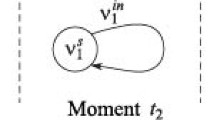Abstract
This paper presents a technique to enhance the testability of sequential circuits by repositioning flip-flops. A novel retiming for testability technique is proposed that reduces cycle lengths in the dependency graph, converts sequential redundancies into combinational redundancies, and yields retimed circuits that usually require fewer scan flip-flops to break all cycles (except self-loops) as compared to the original circuit. Our technique is based on a new minimum cost flow formulation that simultaneously considers the interactions among all strongly connected components (SCCs) of the circuit graph to minimize the number of flip-flops in the SCCs. A circuit graph has a vertex for every gate, primary input and primary output. If gatea has a fanout to gateb, then the circuit graph has an arc from vertexa to vertexb. Experimental results on several large sequential circuits demonstrate the effectiveness of the proposed retiming for testability technique in reducing the number of partial scan flip-flops.
Similar content being viewed by others
References
K.T. Cheng and V.D. Agrawal, “A Partial Scan Method for Sequential Circuits with Feedback”,IEEE Transactions on Computers, Vol. 39, pp. 544–548, April 1990.
D.H. Lee and S.M. Reddy, “On Determining Scan Flip-Flops in Partial-Scan Designs”, inProceedings of the International Conference on Computer-Aided Design, pp. 322–325, November 1990.
V. Chickermane and J.H. Patel, “An Optimization Based Approach to the Partial Scan Design Problem”, inProceedings of the International Test Conference, pp. 377–386, September 1990.
S.T. Chakradhar, A. Balakrishnan, and V.D. Agrawal, “An Exact Algorithm for Partial Scan”, inProc. of the 31 st Design Automation Conf., pp. 81–86, June 1994.
V. Chickermane and J.H. Patel, “A Fault Oriented Partial Scan Design Approach”, inProceedings of the International Conference on Computer-Aided Design, pp. 400–403, November 1991.
D. Kagaris and S. Tragoudas, “Partial Scan with Retiming”, inProc. Design Automation Conference, pp. 249–254, 1993.
C. Leiserson and J. Saxe, “Retiming Synchronous Circuitry”,Algorithmica, Vol. 6, pp. 5–35, 1991.
S. Dey and S.T. Chakradhar, “Retiming Sequential Circuits To Enhance Testability”, inProceedings of the 12th IEEE VLSI Test Symposium, April 1994.
C. Leiserson and J. Saxe, “Optimizing Synchronous Systems”,Journal of VLSI and Computer Systems, Vol. 1, pp. 41–67, Spring 1983.
E. Brglez, D. Bryan, and K. Kozminski, “Combinational Profiles of Sequential Benchmark Circuits”, inIEEE International Symposium on Circuits and Systems Proceedings, pp. 1029–1034, May 1989.
V.D. Agrawal and S.T. Chakradhar, “Combinational Theorems for Identifying Untestable Faults in Sequential Circuits”, inProc. European Test Conf., pp. 249–253, April 1993.
M. Abramovici, M. A. Breuer, and A.D. Friedman,Digital Systems Testing and Testable Design. Computer Science Press, New York, NY, 1990.
I. Pomeranz and S.M. Reddy, “Classification of Faults in Synchronous Sequential Circuits”,IEEE Transactions on Computers, Vol. 42, pp. 1066–1077, September 1993.
S.T. Chakradhar, V.D. Agrawal, and S. Rothweiler, “A Transitive Closure Algorithm for Test Generation”,IEEE Transactions on Computer-Aided Design, Vol. 12, pp. 1015–1028, July 1993.
T.M. Niermann and J.H. Patel, “HITEC: A Test Generation Package for Sequential Circuits”, inProc. EDAC, pp. 214–218, 1991.
C.H. Papadimitriou and K. Steiglitz,Combinatorial Optimization Algorithms and Complexity, Englewood Cliffs, NJ: Prentice Hall, 1982.
CPLEX. CPLEX Optimization, Inc., 930 Tahoe Blvd., Bldg. 802, Incline Village, NV 89451-9436, 1992.
S. Yang, “Logic Synthesis and Optimization Benchmarks, User Guide Version 3.0”, inInternational Workshop on Logic Synthesis (MCNC, Research Triangle Park, NC), May 1991.
R. Haddad and T. Parsons,Digital Signal Processing: Theory, Applications and Hardware, New York, NY: Computer Science Press, 1991.
E. Sentovich, K. Singh, C. Moon, H. Savoj, R. Brayton, and A. Sangiovanni-Vincentelli, “Sequential Circuit Design using Synthesis and Optimization”, inProceedings of the International Conference on Computer Design, pp. 328–333, October 1992.
A.E. Maleh, T. Marchok, J. Rajski, and W. Maly, “On Test Set Preservation of Retimed Circuits”, inProceedings of the 30th Design Automation Conference, pp. 176–182, June 1995.
A. Balakrishnan and S.T. Chakradhar, “Software Transformations for Sequential Test Generation”, inAsian Test Symposium, November 1995.
S.T. Chakradhar and S. Dey, “Resynthesis and Retiming for Optimum Partial Scan”, inProc. of the 31 st ACM/IEEE Design Automation Conf., pp. 87–93, June 1994.
Author information
Authors and Affiliations
Rights and permissions
About this article
Cite this article
Dey, S., Chakradhar, S.T. Design of testable sequential circuits by repositioning flip-flops. J Electron Test 7, 105–114 (1995). https://doi.org/10.1007/BF00993318
Received:
Revised:
Issue Date:
DOI: https://doi.org/10.1007/BF00993318




